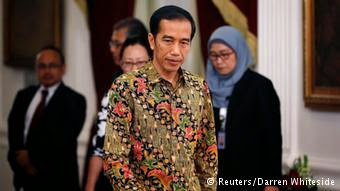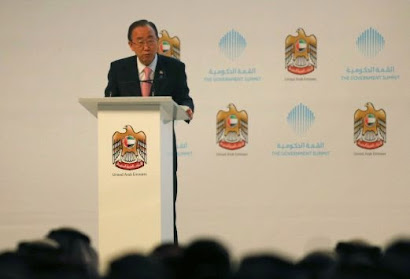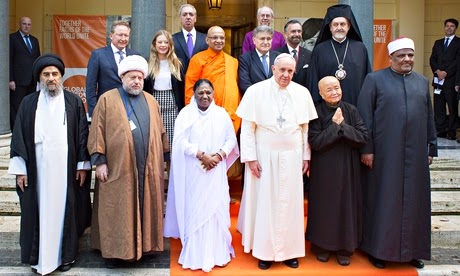
Tracing a pattern at the museum’s workshop. (JG Photo/Candra Malik)
There is no question that batik has become synonymous with Indonesian culture. The much-lauded traditional cloth traces its origins to a noble past and has endured over the centuries, recently being designated as world heritage by the United Nations Educational Scientific and Cultural Organization.
The Danar Hadi Antique Batik Museum in Solo is a good place to learn more about the fabric and the craft that creates it.
In Oct. 20, 2000, Prince Santosa Doellah Hadikusumo opened the museum to showcase his extensive batik collection. Asti Suryo, the museum’s assistant manager, said that Santosa has dedicated his life to identifying, studying, saving and preserving the traditional cloth.
“He started collecting batik at the age of 15 and now he’s 68,” Asti said.
The collection is rightfully housed in a historical venue. The house on Jalan Slamet Riyadi, about three kilometers from the Solo Palace, once belonged to Prince Woerjoningrat, a son-in-law of the late King Solo Pakubuwono X.
Built in 1890 in the Dutch colonial style, the house was declared a heritage building by a mayoral decree in 1997.
Batik has royal roots. The original form, batik keraton (palace batik), was crafted by the nobles themselves. In the early 17th century, the royal kingdom of Mataram — where the palaces of Surakarta Hadiningrat (Solo) and Ngayogyakarta Hadiningrat (Yogyakarta) trace their origins — created the canting , an instrument for designing on cloth.
The word itself is derived from ambatik , which refers to the meaningful set of points that make up a certain pattern. Javanese culture comes together with Hindu ( garuda , hayat tree and tongue of fire), Buddhism (swastika) and Islam (which bans decorating living things) design to make up a traditional pattern.
The cloth’s design denotes one’s stature in society. There are rules that govern what designs can be worn for certain occasions and by whom.
Two-hundred pieces from Santosa’s extensive collection of at least 2,800 ancient Chinese batik are now on display at the museum as part of the Chinese Batik Festival, which ends on March 31.
“It should be emphasized that the Chinese are also legitimate owners of batik because their predecessors were also involved in the history of batik’s development,” Santosa said.
Toetti T Surjanto, the museum’s curator, said that Chinese batik from Indonesia absorbed the elements of culture brought by Chinese merchants. The design is influenced by Chinese mythical animals such as dragons, lions, phoenixes, turtles, kilin (lion-headed dogs), gods and goddesses, ancient China ceramics design and red-or-blue-hued clouds. Chinese batik also incorporate flowers into its design, mainly because of the influence of the Netherlands Batik.
Santosa has received many awards for his batik collection. According to Jaya Suprana, head of the Indonesian Record Museum (MURI), the prince holds the world record for the largest and most diverse collection of Chinese batik.
“I have visited museums around the world and I have yet to find a batik museum that is as complete and which carries such unique varieties as the Danar Hadi Batik Museum,” Jaya said.
During the Chinese Batik Festival, Santosa received two awards from MURI.
“Especially for the Chinese batik, I collected more than 2,800 batik clothes with different decorations,” Santosa said. “These are all stored neatly in a special cabinet. Only 200 pieces are now exhibited. After this, I will hold two festivals, the Netherlands batik and the Japanese batik or Hokokai Javanese batik.”
Aside from Chinese works, the museum is home of the other traditional batik varieties from Santosa’s collection, which are displayed in eight rooms.
Museum curator Toetti said that aside from the Chinese, Netherlands and Japanese types of batik, the museum also has Indian, batik keraton, batik saudagaran (merchant’s batik), batik petani (farmer batik’s) and modern batik.
“From the museum’s collection, we can say that the color and pattern on a piece of batik cloth was influenced by the era and the environment,” Toetti said. “The Netherlands batik, for example, was not batik from Netherlands. It was made in Indonesia and influenced by Dutch culture brought by the VOC [Vereenigde Oostindische Compagnie] to Indonesia, especially between 1840-1910.”
He said that this explained why patterns of the Netherlands batik was initially influenced by Dutch folklore themes like Snow White, Little Red Hiding Hood and Hanzel and Gretel. Dutch ladies who fell in love with batik during colonial times also contributed their own motifs.
During the close to four years of Japanese occupation in Indonesia, the Hokokai Javanese batik came into being.
Foreign merchants who immigrated to Indonesia from South China also did not want to give up wearing the batik so they adopted batik pesisiran (littoral batik) and made their own batik clothes.
Meanwhile, local merchants who were prohibited from wearing batik keraton drew unique motifs known as batik saudagaran .
Santosa has made it his mission to trace and preserve the history of batik around the world. For instance, he bought the entire batik collection of Harmen C. Veldhuisen in the Netherlands when the collector decided to sell it all after divorcing his wife. Santosa also purchased an old batik collection from Christie’s Fine Art Auction house in Paris.
“On one hand, Santosa has been selling batik since he was studying economics at Padjadjaran University in Bandung,” said Danarsih, Santosa’s wife. “On the other hand, he hunts down the best ancient batik from anybody anywhere he goes. Santosa is a strict collector. He refuses to buy a batik with low-level pattern and torn fabric.”
Museum assistant manager Asti said that only batik that Santosa is only interested in batik that is over 100 years old and created by the royal family. “Believe me, all batik in the museum does not exist outside anymore,” she said.
“The entire collection of Batik Saudagar here, for example, is no longer owned by the merchants of Kauman and Laweyan Batik Tourism Villages in Solo, Central Java, although they were actually the original owners of the motif.”
In addition to its unparalleled batik collection, the museum also has seven kinds of wax for batik that can only be found in Indonesia on display.
At the museum’s backyard, visitors can watch how batik tulis — which uses the original technique of applying waxy by hand — is made and how the more modern batik cap is done using a combination of print device and hand technique.
Over the years, the museum has received numerous awards. It often holds seminars and workshops on batik making and entrepreneurship. Many students have also written papers on its collections.
One avid collector’s passion has successfully provided an avenue of learning for the public.
Danar Hadi Antique Batik Museum
Jalan Slamet Riyadi No. 261, Solo, Central Java
Tel: 02 7171 4326
Fax: 02 7171 3140
seumbatikdanarhadi.blogspot.com
astutisuryoastuti@yahoo.com






No comments:
Post a Comment